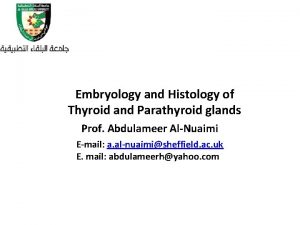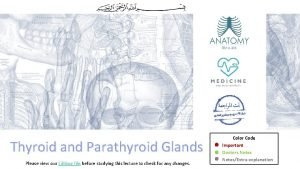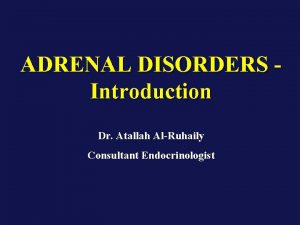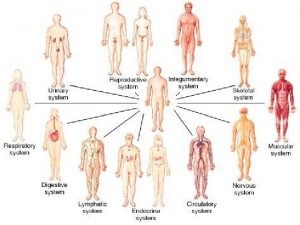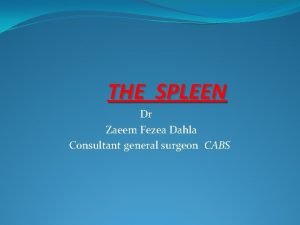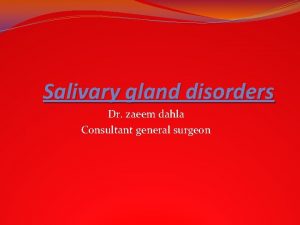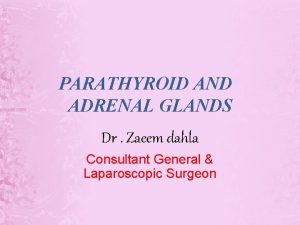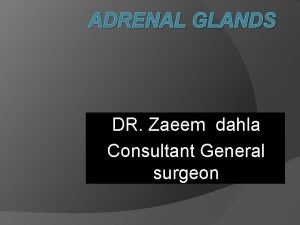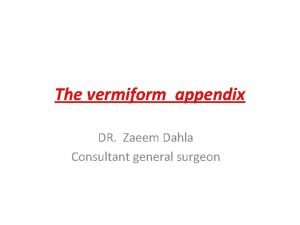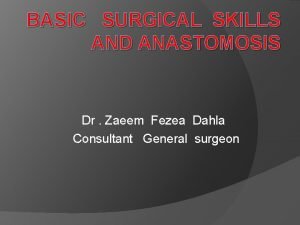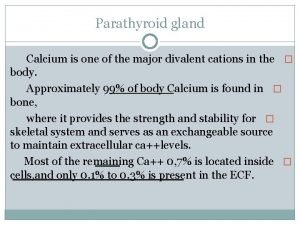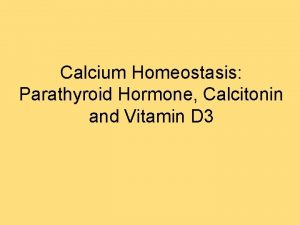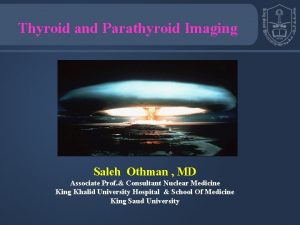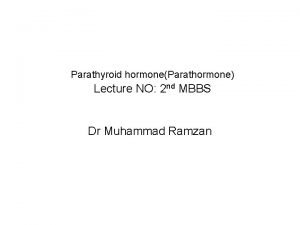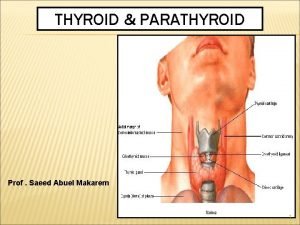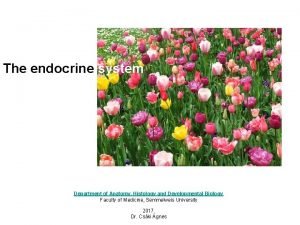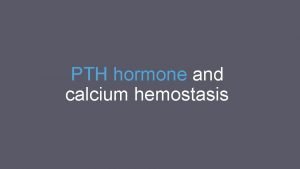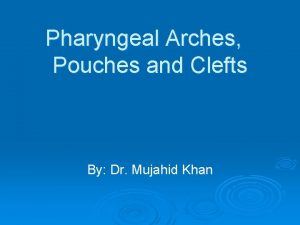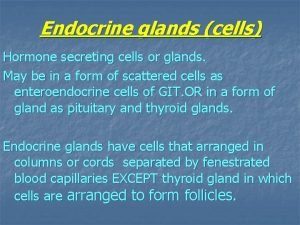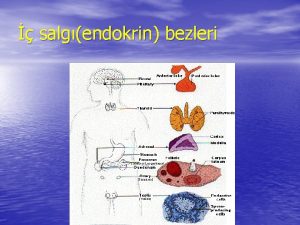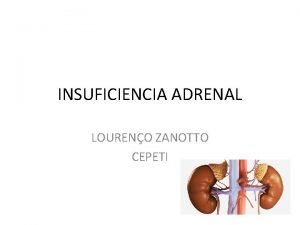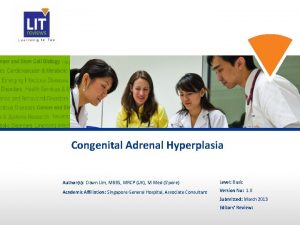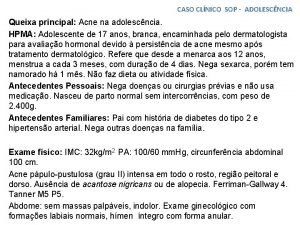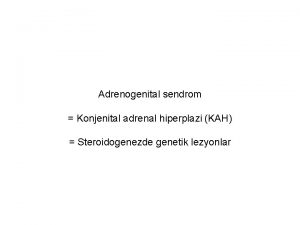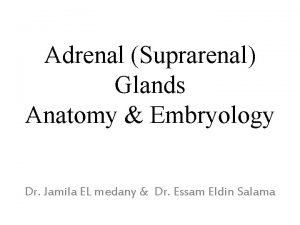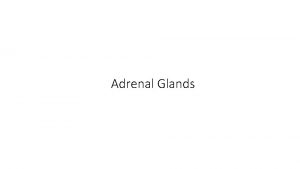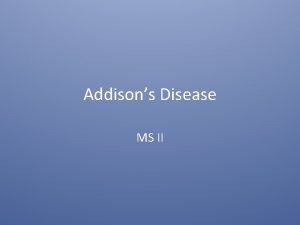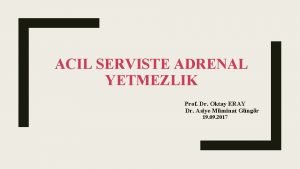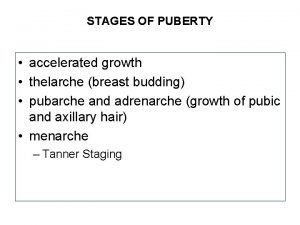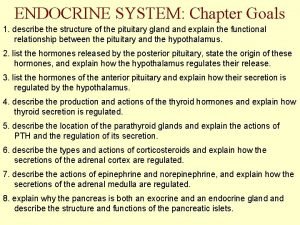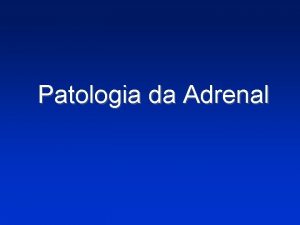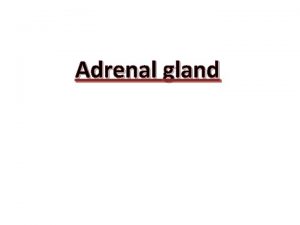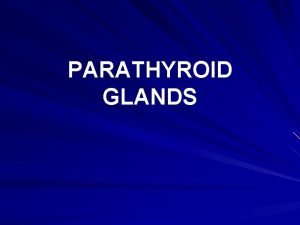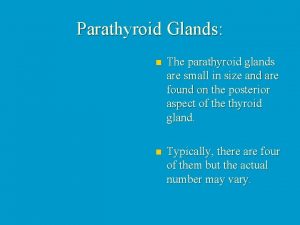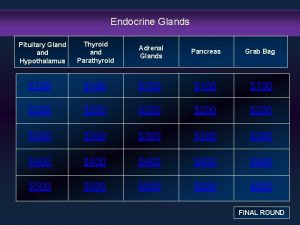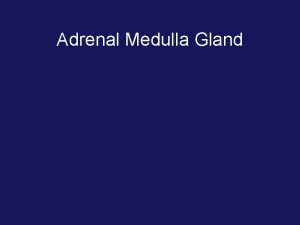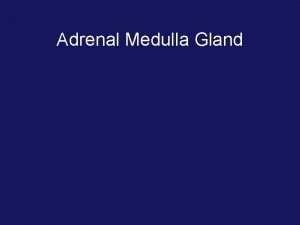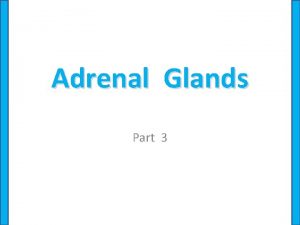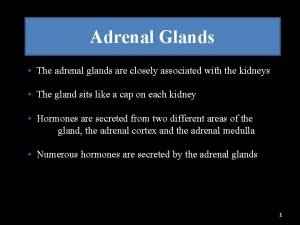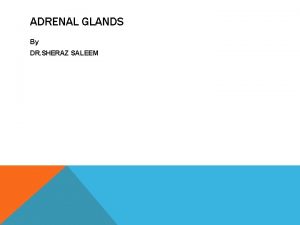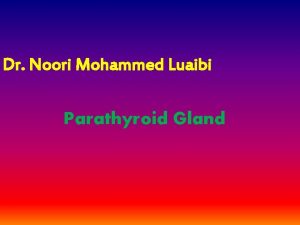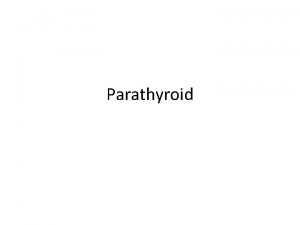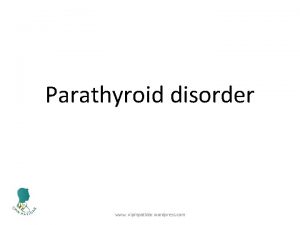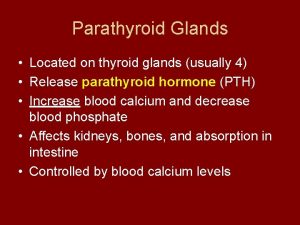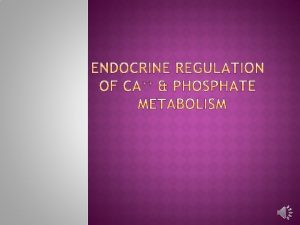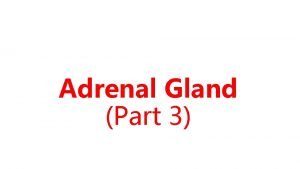PARATHYROID AND ADRENAL GLANDS Dr Zaeem dahla Consultant



































- Slides: 35

PARATHYROID AND ADRENAL GLANDS Dr. Zaeem dahla Consultant General & Laparoscopic Surgeon

Parathyroid glands Learning Objective A-To understand the development &anatomy of parathyroid. B-TO understand the physiology, function & investigation of PT. C-To describe management , risks & complications of parathyroid surgery.


EMBERIOLOGY THE foramen caecum at the base of the tongue is a remnant of thyroglossal duct this hallow structure migrate caudally and pass in close continuity with, and some times through the developing hyoid cartilage. The PTGs develop from the 3 rid&4 th pharyngeal pouch. The thymus gland also develop from 3 rid pharyngeal pouch As it descend to superior mediastinum , in thorax it take with it the PTG which arise from 3 rid pharyngeal pouch take the inferior site in regards to it upper pouch. THYROID GLAND ; usually arise from the 4 th • pharyngeal pouch.

Surgical anatomy & physiology • The normal PTG weight up to 50 mg with charterstic orangebrown colour. • Most adult have 4 glands, 2 superior, 2 inferior , but may have more than 4 glands, . • Superior PTG usually constant in its position , while the inferior PTG have non fixed position. • Upper PTH glands found in a fat tissue above on the posterolateral border of the thyroid immediately above the point of entry of the inferior thyroid artery.




• The lower pair of PTG , more variable in position , are usually found at the lower pole of thyroid , but may be found anywhere along a line from this situation downwards to the upper pole of thymus. Approximately 5% of PTGs are found within the upper anterior mediastinum. each gland has small capsule and is supplied by a single leash of blood vessels , theses glands are usually lie outside thyroid gland capsule.

• Histology; • The stroma consists of rich sinusoidal capillary net work with islands of secretory cells , two type of cells. The ‘ chief ’ cells or principle cells are small with vesicular nuclei and poorly staining cytoplasm. ‘oxyphil ’ cell are less numerous and larger , with granular cytoplasm and deeply staining.

• FUNCTION. • Chief cells give P. T. H also called parathormone, the hormone released directly into the blood. the circulating level of this hormone can be measured by radioimmuno-assay. it is sufficiently reliable to distinguish between high and low levels.

• FUNCTION OF PARATHYROID HORMONE • Stimulate osteoclast activity, thereby increase bone resorption by mobilizing calcium and phosphate. • Increase the reabsorption of calcium by renal tubules; thus reducing urinary secretion of calcium • Augment the absorption of calcium from the gut. • Reduce renal tubular re absorption of phosphate , thus promoting phosphate urea.

• Calcitonin hormone • Was once thought to be the second parathyroid hormone , but is now known to be secreted by thyroid from the ‘parafolicular cells ‘ ( c cell) its action quite the opposite action of parathormone.

Disease of parathyroid glands Hypo parathyroidism Hyper parathyroidism

hypoparathyroidism • Parathyroid titany is a rare complication of subtotal thyroidectomy (less than 1%) • Symptoms usually appear on the 2 nd or 3 d post oprative day, and are temporary. • Permanent hypoparathyroidism, most commonly encountered following radical thyroidectomy , this require constant supervision and treatment. • Titany in newborn may occur within the first few days of life in the child born of a mother with un diagnosed hypo parathyroidism.

Clinical feature • The 1 st symptoms are tingling and numbness in the face , fingers, toes. • In extreme cases cramps in the hands and feet's are very painful , the extended fingers are flexed metacarpi- phalangeal joints with thumb strongly adducted. • This called ( capo pedal spasm)


• Spasm of respiratory muscle. • In infancy symptoms of titan may be mist taken for epilepsy , though there is no loss of consciousness. • Latent titan maybe demonstrated by : • # chvostek’s sign • # trousseau’s sign

Treatment • In acute cases the symptoms can be qiuckly and effectively relieved by slow iv injection 10 -20 ml of 10% of calcium gluconate , this can be repeated till the serum ca level has been established. • Oral vitamen D (increase ca absorption from GIT) and calcium lactate. • Initial dose 400000 units of calciferol may be followed by 100000 units , daily till serum ca level become normal.


Hyperparathyroidism • Symptoms of over activity of the para thyroid gland may result from single or multiple adenoma (85%) • Hyperplasia of all 4 glands 13% • Carcinoma more than 1%. • That whole glands enlarged, darker in color. Firmer and more vascular.

Clinical feature • Hyperparathyrodism rarely found in 1 st decade of life's. • More common in women than men. • Most commonly between the age 20 -60 y • The disease has been described as : bones , stones , abdominal groans and psychic moans


Parathormone increase Bone disease • • Jonits, bones pain density of bones change Otitis fibrosa cystica Bone cyst (jaw bones) Renal stone renal stone nephroclcinosis renal colic Abdominal groans nausea , vomiting, anorexia peptic ulcer pancreatitis Psychic moans tiredness personality

investigation • serum calcium upper limit (10. 9 mg/dl) • • serum phosphate lower limit (3 mg/dl) excretion of ca in urine. serum alkaline phosphatase. serum PTH.

Differential diagnosis • Secondary cancer in bones ( breast, prostate, bronchus, kidney, thyroid) • Carcinoma with endocrine secretion (bronchus , kidney, ovary) • Multiple myeloma • Vitamin d intoxication • Sarcoidosis • Thyrotoxicosis


treatment • Surgery is the only curative treatment • Pre operative treatment is not usually necessary. • Occasionally patient with hypercalcemic crisis need emergency treatment by fluids infusion and biphosphate therapy.







 Thyroid and parathyroid glands
Thyroid and parathyroid glands Thyroid and parathyroid glands
Thyroid and parathyroid glands Innervation of parathyroid gland
Innervation of parathyroid gland Adrenal glands
Adrenal glands Organ systems
Organ systems Gianuzzi demilune
Gianuzzi demilune Depulping of spleen
Depulping of spleen Sialadinitis
Sialadinitis Dr dahla
Dr dahla Dr dahla
Dr dahla Dr dahla
Dr dahla Fezea
Fezea Parathyroid hormone and calcitonin
Parathyroid hormone and calcitonin Calcitonin vs pth
Calcitonin vs pth Shrsies
Shrsies Pth hormone
Pth hormone Superior thyroid artery is a branch of
Superior thyroid artery is a branch of Endocrine organ histology
Endocrine organ histology Surfaces of thyroid gland
Surfaces of thyroid gland Phycatris
Phycatris Third pharyngeal pouch
Third pharyngeal pouch Neurohypophsis
Neurohypophsis Zona
Zona Autonomic nervous system visceral
Autonomic nervous system visceral Adrenal bez histolojisi
Adrenal bez histolojisi Arritimias
Arritimias Dr dawn lim
Dr dawn lim Estadiamento de tanner
Estadiamento de tanner Pseudohermafrodit
Pseudohermafrodit Suprarenal gland relations
Suprarenal gland relations Glucocorticoids
Glucocorticoids What causes addisons disease
What causes addisons disease Eray okutay
Eray okutay Congenital adrenal hyperplasia characteristics
Congenital adrenal hyperplasia characteristics Dr wilson adrenal rebuilder side effects
Dr wilson adrenal rebuilder side effects Summary of adrenal gland
Summary of adrenal gland

